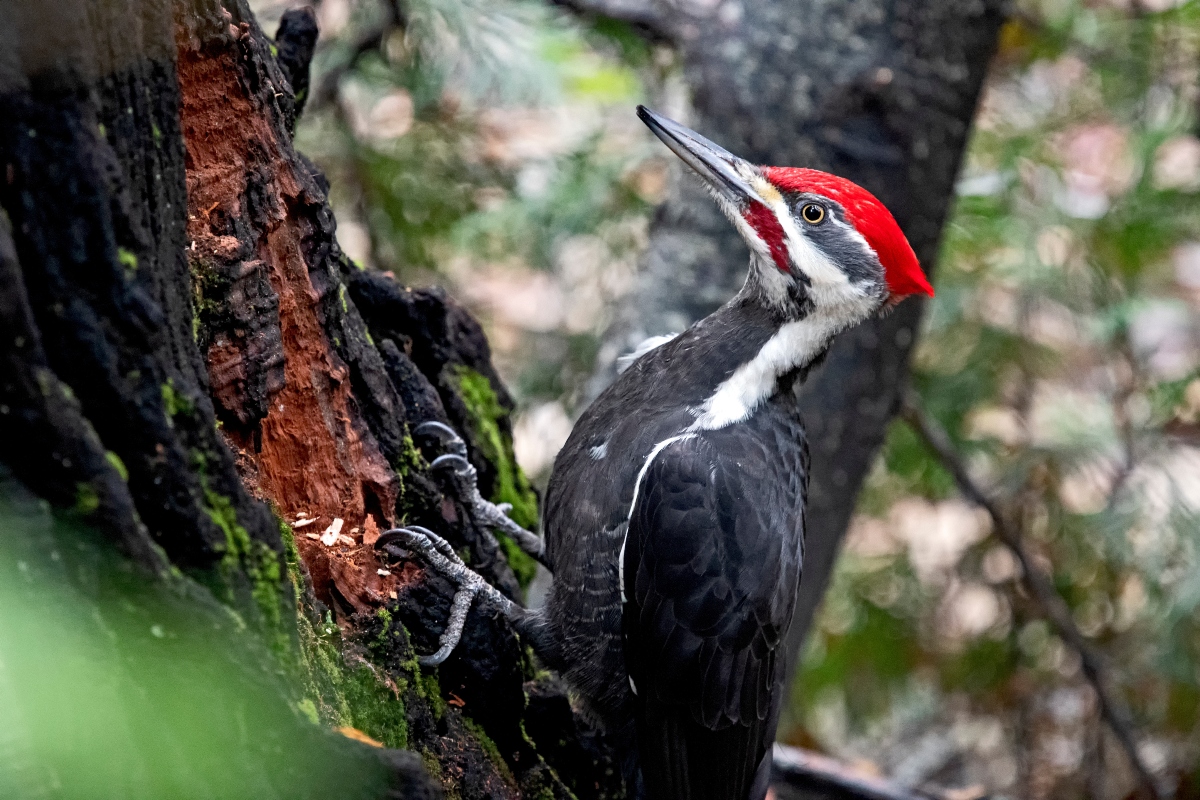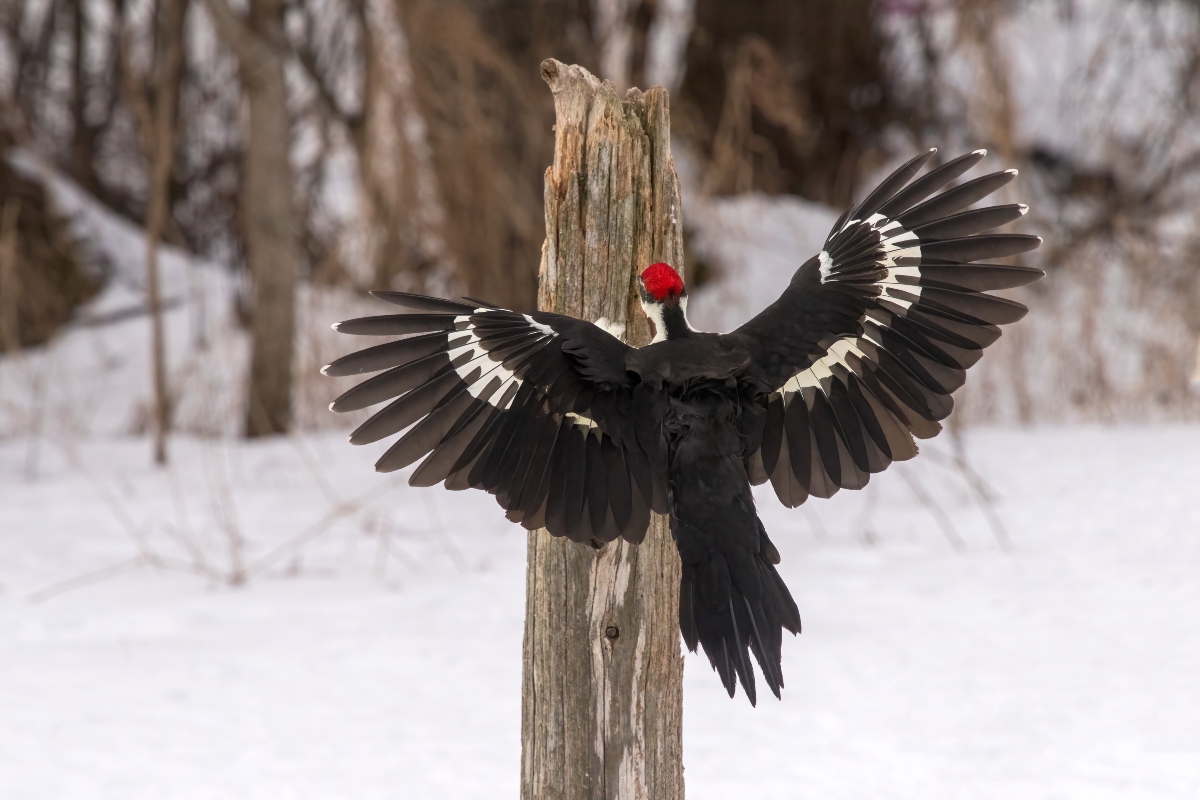The Pileated Woodpecker, scientifically named Dryocopus pileatus, heralds as one of the largest woodpeckers found in North America. Its striking appearance and distinctive, echoing drumming sound offer a unique charisma that punctuates the serene landscapes of the vast forests it inhabits.

Typically stretching to lengths of 40-49 cm (16-19 inches) and boasting a wingspan of approximately 66-75 cm (26-30 inches), the Pileated Woodpecker is easily recognizable by its bold, black body, striking white stripes on the face, and a brilliant red crest. The males flaunt an additional red stripe, or mustache, on the cheek, which distinguishes them from the more modestly decorated females.
Widely distributed across the United States and Canada, these woodpeckers favor mature forests, but have also adapted to the fragmented woodlands and suburban areas, demonstrating a heartening degree of resilience and adaptability.
Armed with a chisel-like beak, the Pileated Woodpecker masterfully carves out large, rectangular cavities in trees in its search for its favorite prey: carpenter ants. Their diet also includes other insects, fruits, and nuts, but their role in controlling ant populations is significant in maintaining the ecological balance of their habitats.
Their powerful drumming not only aids in foraging but also serves as a communication tool, announcing their presence to potential mates and rivals alike. During breeding season, a mated pair, which often forms a bond that lasts a lifetime, will work together to create a nesting cavity, usually in a dead tree, where the female will lay 3-5 eggs.

Despite being non-migratory and territorial, the Pileated Woodpecker plays a vital role in its ecosystem. The large cavities chiseled out by these birds often become nesting and roosting sites for various other animals, such as owls, bats, and smaller bird species, once they are vacated.
While Pileated Woodpeckers are not currently considered endangered and are reasonably widespread, they are not entirely free from threats. Habitat loss due to logging and urban development, in addition to potential disturbances from recreational activities in their habitats, can impact their populations.
The Pileated Woodpecker embodies the rhythmic heartbeat of the North American forests, its iconic drumming echoing through the tall, mature woodlands it calls home. Their notable presence in our forests serves as a reminder of the intrinsic value of maintaining healthy, robust ecosystems, and the interconnectedness of all living beings within it.